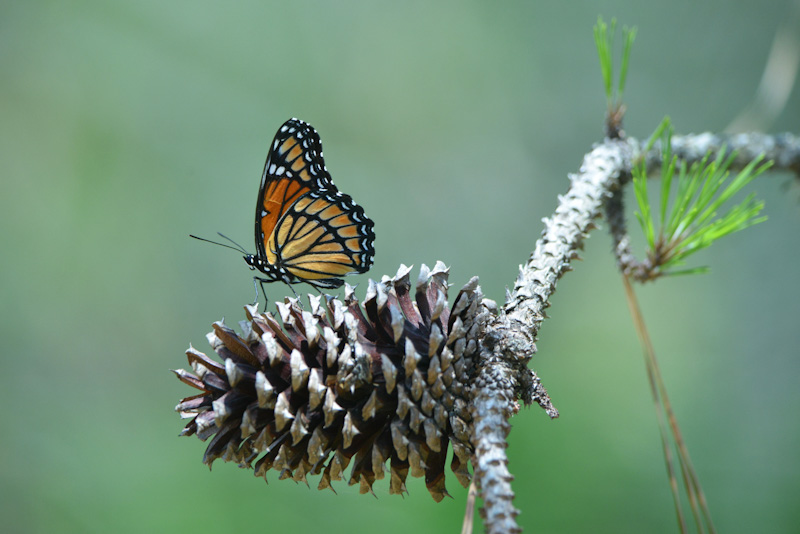
Photo and Commentary ©2024 by Robert Howson
Tuesday, August 27, 2024
As far back as grade school I can remember being told that the Monarch butterfly, with which we were all familiar, had a double that mimicked the appearance of the well-known species. We knew this was true because it was pictured right there in our Christian textbooks.
What we and apparently our teacher failed to recognize was that this was based upon evolutionary logic, which employed something known as Batesian mimicry. In this model a palatable species would develop into looking like a toxic species in order to avoid predation. It was assumed that once a bird took a bite of a nasty tasting Monarch, it would avoid the similar appearing Viceroy. It made perfect sense, even though the evolutionary overtones were lost on us.
Ah, but times have changed. This long-accepted example has now been rejected as invalid by many entomologists. It is true that the Monarch caterpillars feed on milkweed which gives them a bitter taste, but the Viceroy feeds on members of the willow family from which they get salicylic acid which also makes them bitter. Experiments have been done with both, where the wings were removed, and birds found both species to be just as unpalatable.
Does this prove that creationists have it right? Of course not. What it should tell those of us who are creationists is that we should think carefully about what underlying principles we are asked to accept when “truths” are proposed. It should also encourage us to test for ourselves to determine if the evidence holds up under careful examination. Good advice whether one is in the classroom or walking the streets of life.
